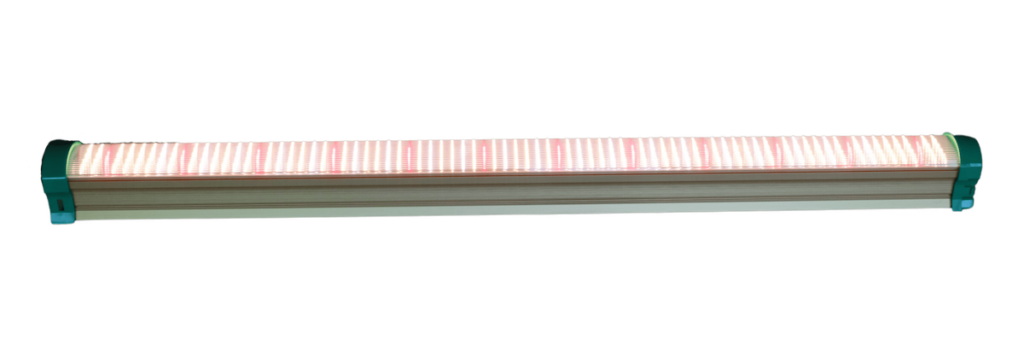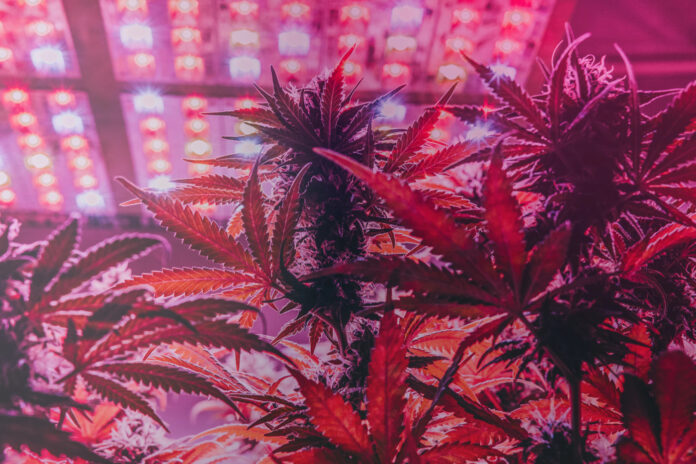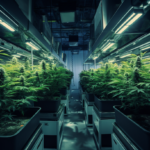The latest advancements in lighting technology are giving growers unprecedented control over plant development. Supplemental spectrums like ultraviolet (UV) and far-red light have the potential to enhance cannabinoid and terpene production, but their effectiveness requires more than simply installing new equipment and flipping a switch. To truly unlock a cultivar’s potential, growers must understand the intricate biological processes occurring at the cellular level and how plants respond to these changes.
Harnessing supplemental spectrums
Supplemental lighting is essential for indoor and greenhouse cultivators who want maximum control over their gardens. Options like UV and far-red spectrums work alongside visible light to influence plant growth at a cellular level, making it possible to achieve results that traditional lighting alone can’t deliver. However, if growers are not careful, the stress placed on plants from the incorrect application of these spectrums will do far more harm than good.
UV light
UV light—specifically UV-A and UV-B wavelengths—can impact cannabis plants in uncommon ways. In nature, UV rays from the sun can trigger physiological and biochemical reactions as plants work to defend themselves.

In cannabis, this defense response can translate into increased production of trichomes—the small, crystal-like structures on cannabis buds that store cannabinoids and terpenes. Some research studies suggest exposing cannabis plants to UV-B light can boost THC levels by simulating mild stress conditions, encouraging the plant to produce more cannabinoids and terpenes as protection against the perceived threat.
According to Mikhail Sagal, co-founder and president at TSRgrow lighting solutions, there are many UV wavelengths to consider, but many are dangerous for plant cells.
“Much is still to be learned from UV spectrums being offered,” Sagal said. “UV lighting has very targeted results from exposure times and wavelengths. Strain tolerance and quality goals can be enhanced if dialed in with all of the controlled environment agriculture variables. When done right, yield improvements and integrated pest management can be achieved.”
TSRgrow’s UV light bars are designed to stimulate trichome production and increase terpene levels while offering pest mitigation.
While Grower’s Choice Cultivation Director Jason Davidson acknowledges the potential benefits of UV lights in the grow room, he emphasizes the importance of understanding that UV does not contribute to photosynthesis.
“When we deliver light to a plant, the primary reason is to drive that process of photosynthesis, where we turn light into plant material, and UV light doesn’t do this at all,” Davidson said. “So, in the traditional sense, there’s really no benefit to the plant as far as providing better yield or quality.”
Davidson believes there’s a lot of “bad science” and conjecture around UV, leading many to assume providing cannabis with any UV light will increase cannabinoid production.
“Actual scientific studies haven’t been able to prove that, but they have been able to prove that UV light is very disruptive, and it actually damages cells,” Davidson said. Cell damage certainly doesn’t sound like a good thing, but it ultimately depends on what type of cell we’re talking about.
“In proper wavelengths and dosages, UV can actually help with disease management,” he said. “A common pathogen for cannabis is powdery mildew. By providing UV light, you can reduce instances of powdery mildew and come away with an overall healthier plant.”
Still, growers have to be careful when taking this approach, as its results are very much dose- and intensity-dependent.
“If you’re delivering too much UV, you might go beyond damaging powdery mildew cells and start damaging healthy plant cells,” Davidson said. “At this point, it’s a negative—not a positive. So, you want to be careful with UV light to make sure you’re attacking the mold, not the plant.”
Far-red light
Far-red light plays a key role in promoting flowering and optimizing plant structure. Plants exposed to far-red light have been shown to grow taller and adjust their internodal spacing, allowing for a fuller canopy and increased light capture. This reaction is called the shade-avoidance response, it is the plant’s way of competing for sunlight with neighboring vegetation.
In cannabis, far-red light encourages flowering and can lead to a more uniform structure, ideal for maximizing yields. This spectrum helps initiate and sustain the flowering phase, which can be critical for growers aiming to speed up crop cycles. However, the growth it promotes must be monitored.
“Originally, far-red wasn’t considered photosynthetically active, meaning it doesn’t have a wavelength that drives photosynthesis,” Davidson said. “But more recent science has actually changed its tune and found that it actually does drive photosynthesis.”
When far-red is utilized in tandem with other wavelengths, it can work synergistically.
“In short, it plays well with other light colors,” Davidson said. “Blue, green, and red wavelengths are common in grow lights, and all of those will penetrate leaves fairly shallowly, getting absorbed by the top of the leaf for photosynthesis. Far-red penetrates all the way through the leaf—far deeper into the canopy.”
As a result, far-red light is relatively more abundant in shaded conditions where other wavelengths struggle to reach.
“If you provide far-red light at a higher rate than other wavelengths, you’ll see your plants do one of two things: they’ll either stretch to get more light or they’ll develop larger leaves to take in more light,” Davidson said. “Because far-red penetrates that dense canopy much better than other wavelengths, the plants on the ground will receive far-red at much higher doses. And that tells the plants under the canopy, ‘Hey, you’re in the shade.’ Plants’ natural response to shade is to try to get out of it, so that’s what’s driving the growth and stretch.”
While more growth always sounds beneficial, it’s not always the case.
“Let’s think about lettuce as an example: when given large doses of far-red, lettuce leaves will get really big and wide, and that’s great for that food,” Davidson said. “But that’s actually not beneficial for cannabis, because stretching is typically something we’re trying to avoid. That being said, if you’re giving far-red in equal doses to other wavelengths rather than higher doses, it will act like other photons and help drive that photosynthesis.”
In addition to being a photosynthesis driver, far-red can increase THC and total cannabinoids when used at the ideal ratio for each cultivar.
“We find that having a specific ratio can optimize the expected benefits and eliminate unnecessary variables,” Sagal said. “It’s similar for infrared lighting too—when used correctly, all of the benefits we expect to see from a cannabis plant will be realized.”
Infrared light
According to Davidson, the key benefit of infrared is limited to temperature.
“Infrared doesn’t drive photosynthesis; it will just warm up the plant, which can be beneficial because plants will grow optimally when their leaf temperature hits a certain level,” Davidson said. “However, most cultivators today are using LED lighting, and LED doesn’t produce infrared like our old school lights did back in the legacy days. We’re finding that growers are actually having to change the parameters of their grow rooms to run a bit warmer because they aren’t receiving that infrared anymore.”
Instead of finding a way to work infrared into the LED equation, many opt for energy-efficient heaters to accomplish the same goals. But Davidson believes we’ll eventually see more efficient infrared lighting reach the marketplace.
Lighting under the canopy
Supplemental spectrums aren’t the only way cultivators alter light distribution. Under-canopy lighting is an increasingly popular practice that doesn’t require as many variations in equipment or management.

“Under-canopy lighting is just like it sounds—lights delivered under the canopy,” Davidson said. “[Commercial] cannabis is primarily grown indoors, where we’re relying on artificial lighting. And historically, that has been delivered from the top of the plant to the canopy. Under-canopy lights deliver light to underserved parts of the plant—parts that might not be able to get that light you deliver to the top. This process evens out that light distribution within your plant so that the bottom and middle part is receiving similar levels to the top.”
This strategy results in more crop equilibrium, meaning the buds produced at the middle and bottom of the plant are closer in size, shape, color, and density to the most desirable buds at the top.
“Under-canopy lighting also reduces labor costs, because in the past, cultivators were having to go in and remove lower parts of the plant that were underperforming,” Davidson said. “Now, they can save that labor, leave that growth on the bottom of the plant, and increase the overall yield of the plant. It also reduces post-harvest labor, because you don’t need to spend as much time sorting through piles of A buds, B buds, and C buds. With under-canopy lighting, everything goes into the same A pile because everything is A quality.”











